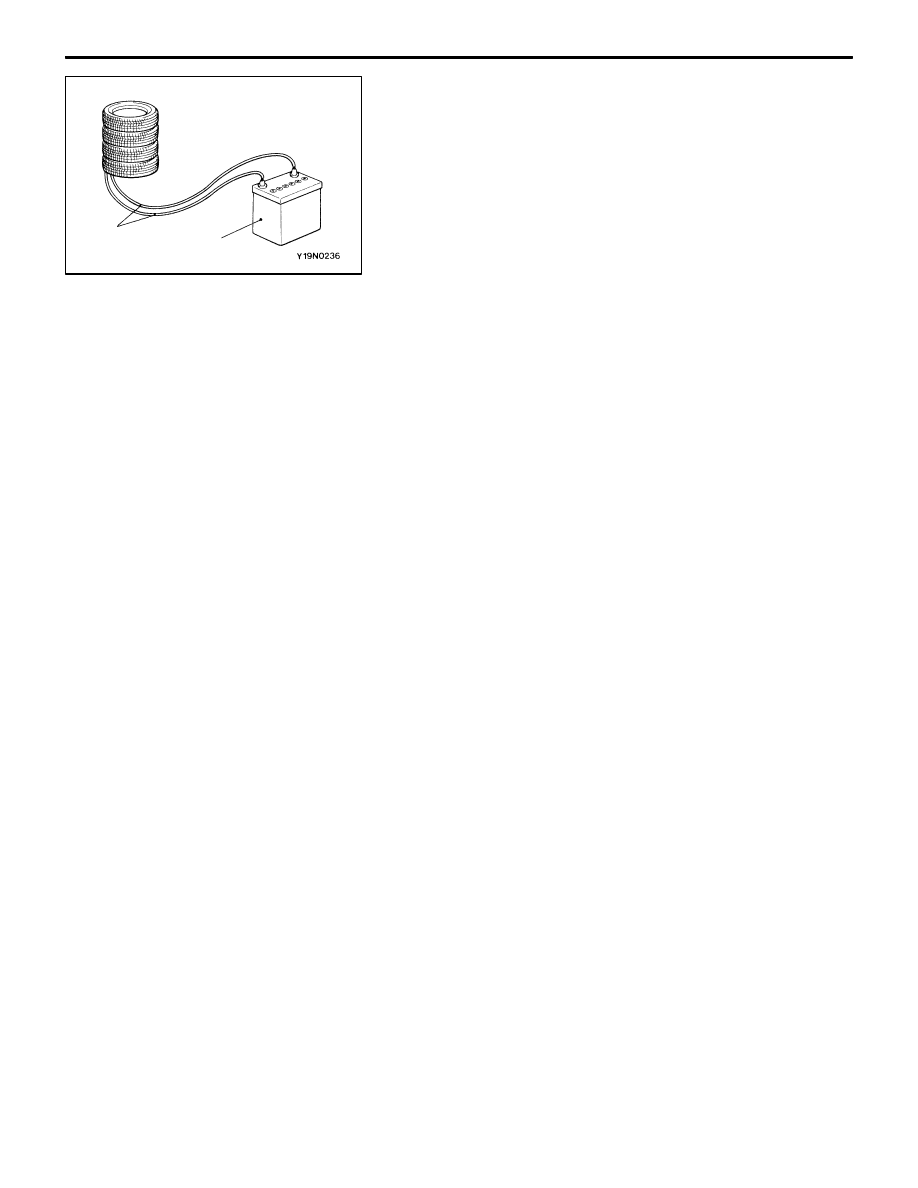Mitsubishi Lancer Evolution VI. Manual - part 98

SRS –
Air Bag Module Disposal Procedures
52B-38
(6) At a location as far away from the air bag module
as possible, and from a shielded position, disconnect
the two connected wires from each other, and connect
them to the two terminals of the battery (which has
been removed from the vehicle) to deploy the air
bag.
Caution
1) Before deployment, check carefully to be sure
that no one is nearby.
2) The inflator will be quite hot immediately
following the deployment, so wait at least 30
minutes to allow it to cool before attempting
to handle it. Although not poisonous, do not
inhale gas from air bag deployment. See
Deployed Air Bag Module Disposal
Procedures (P.52B-40) for post-deployment
handling instructions.
3) If the air bag fails to deploy when the
procedures above are followed, do not go near
the module. Contact your local distributor.
(7) After deployment, dispose of the air bag module
according to the Deployed Air Bag Module Disposal
Procedures. (Refer to P.52B-40.)
Wires
Vehicle battery